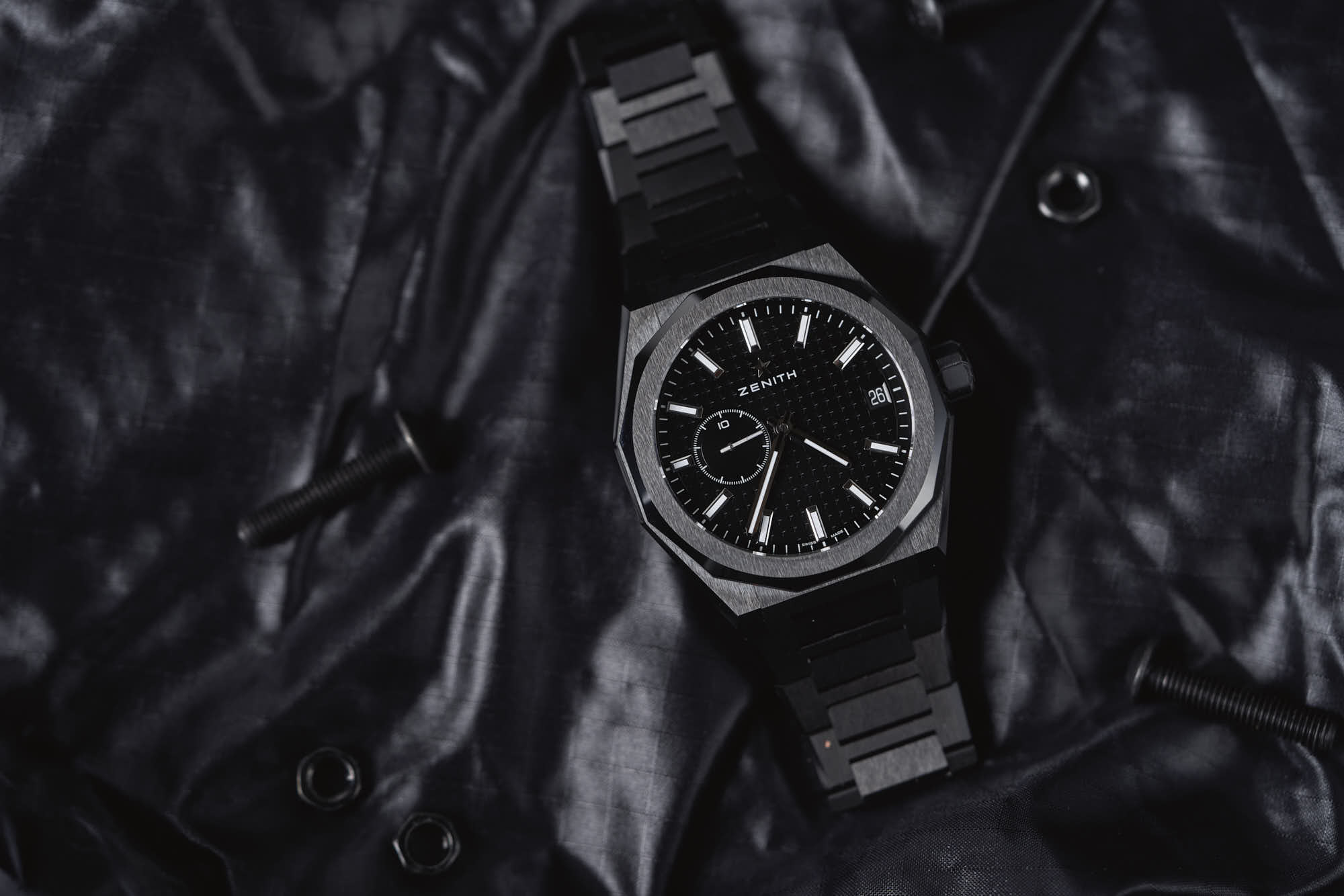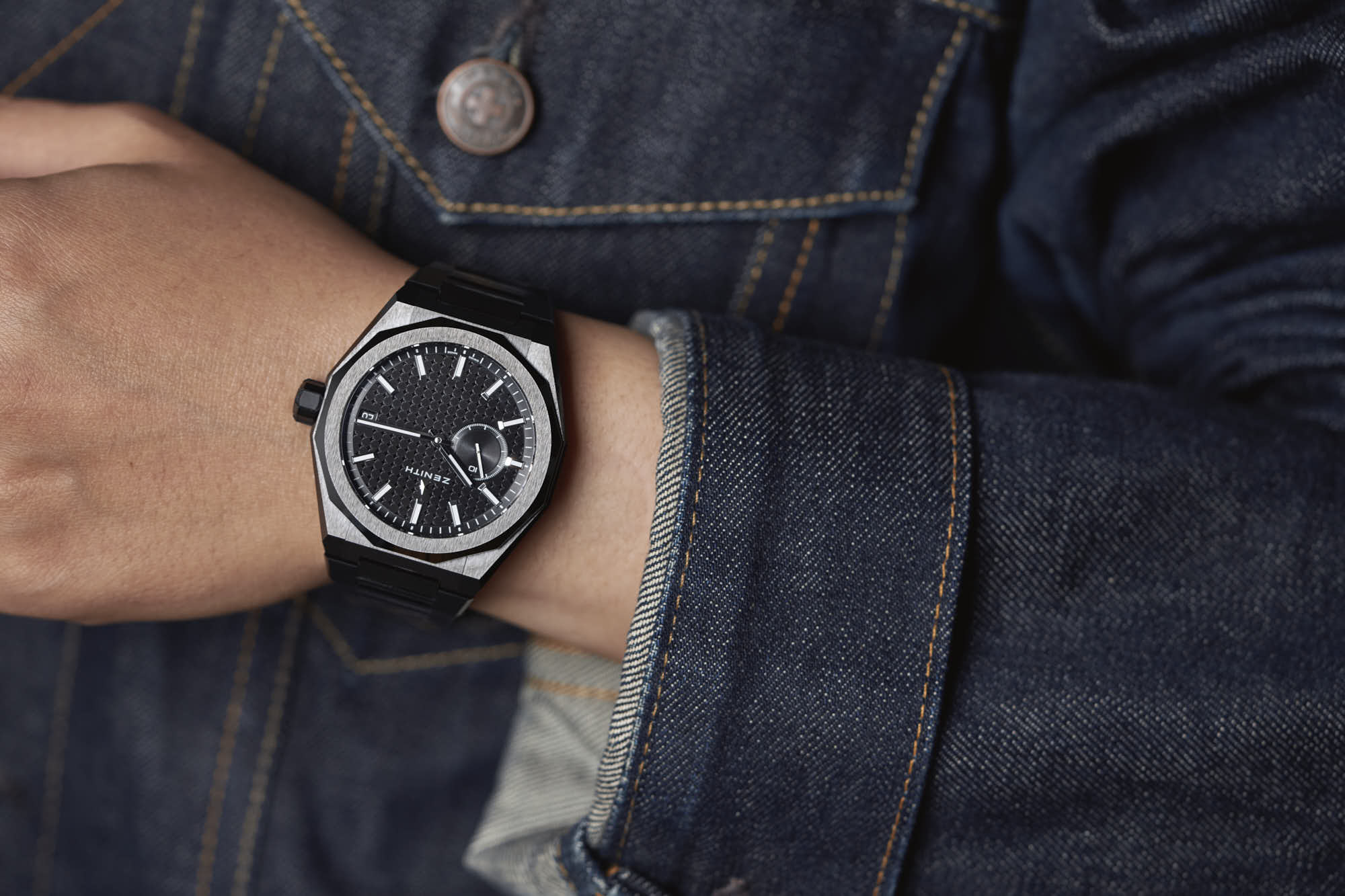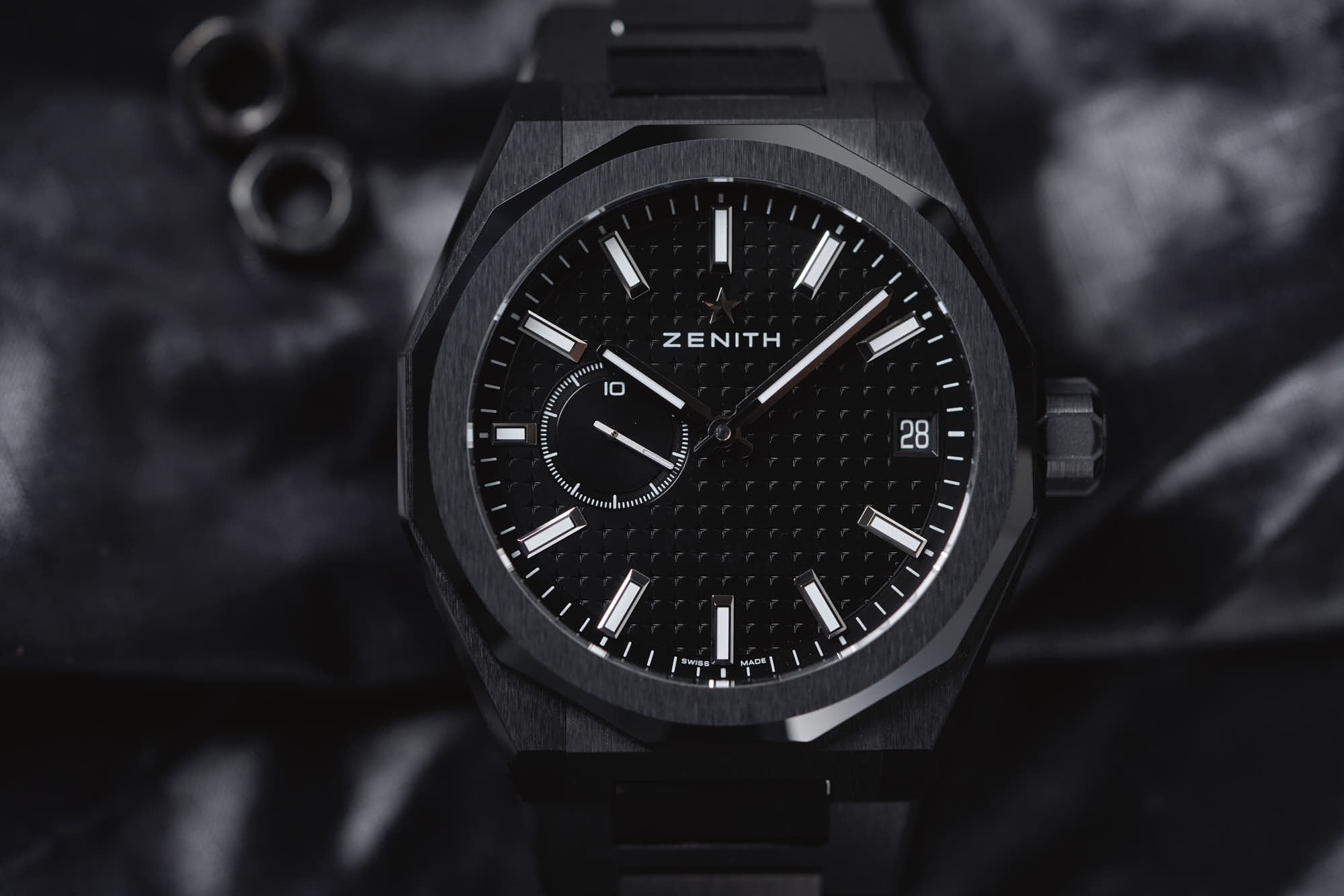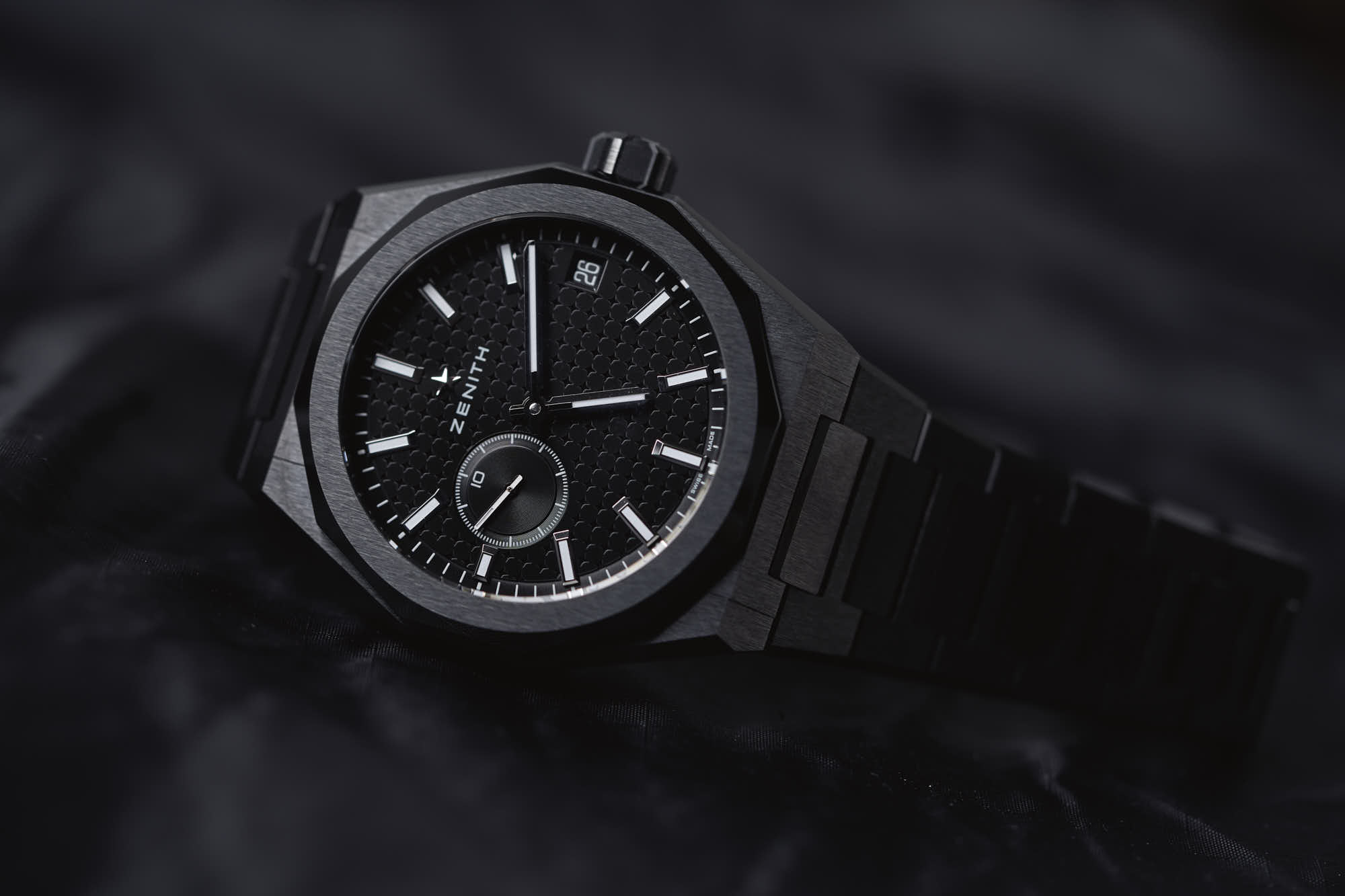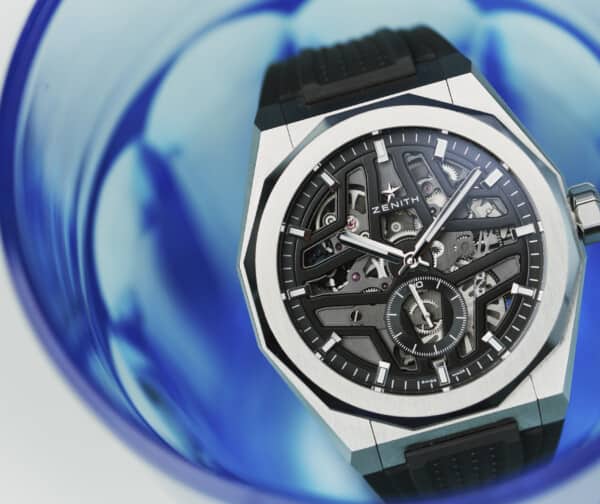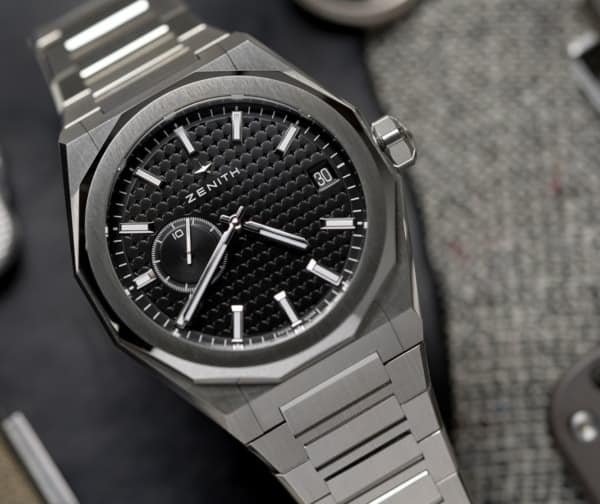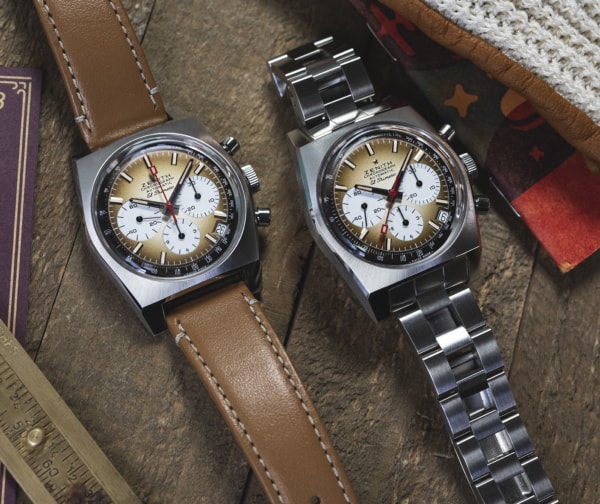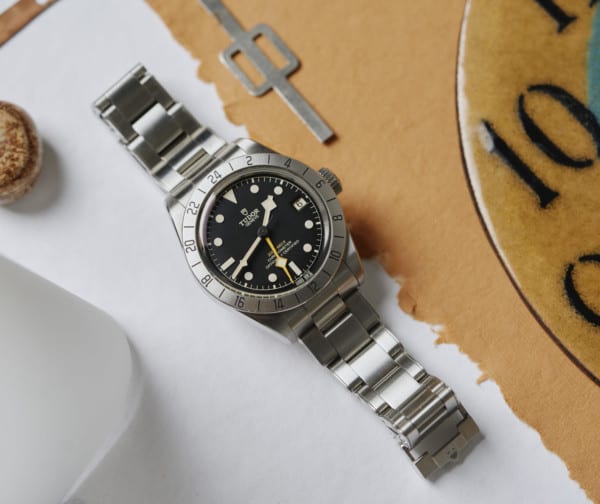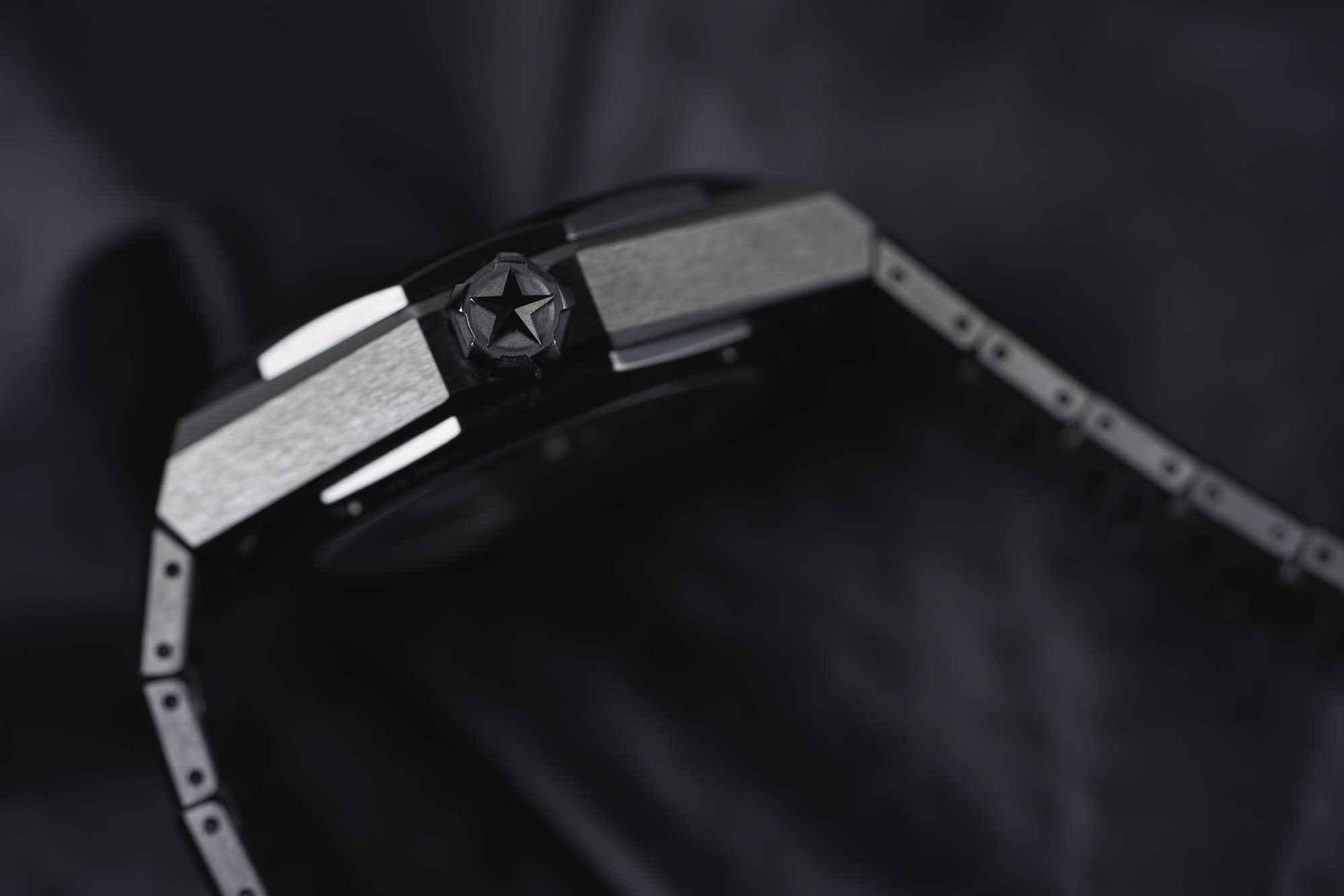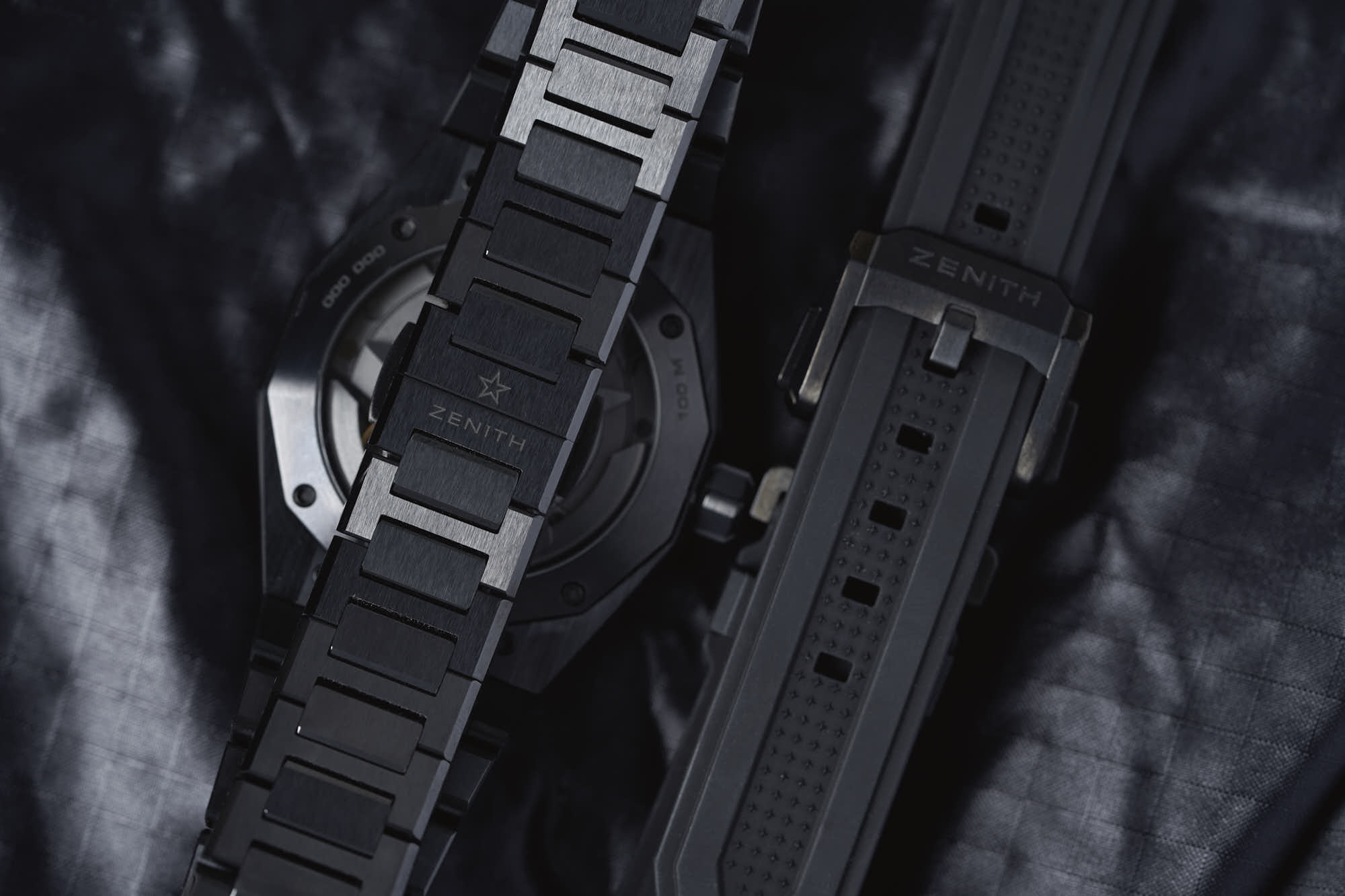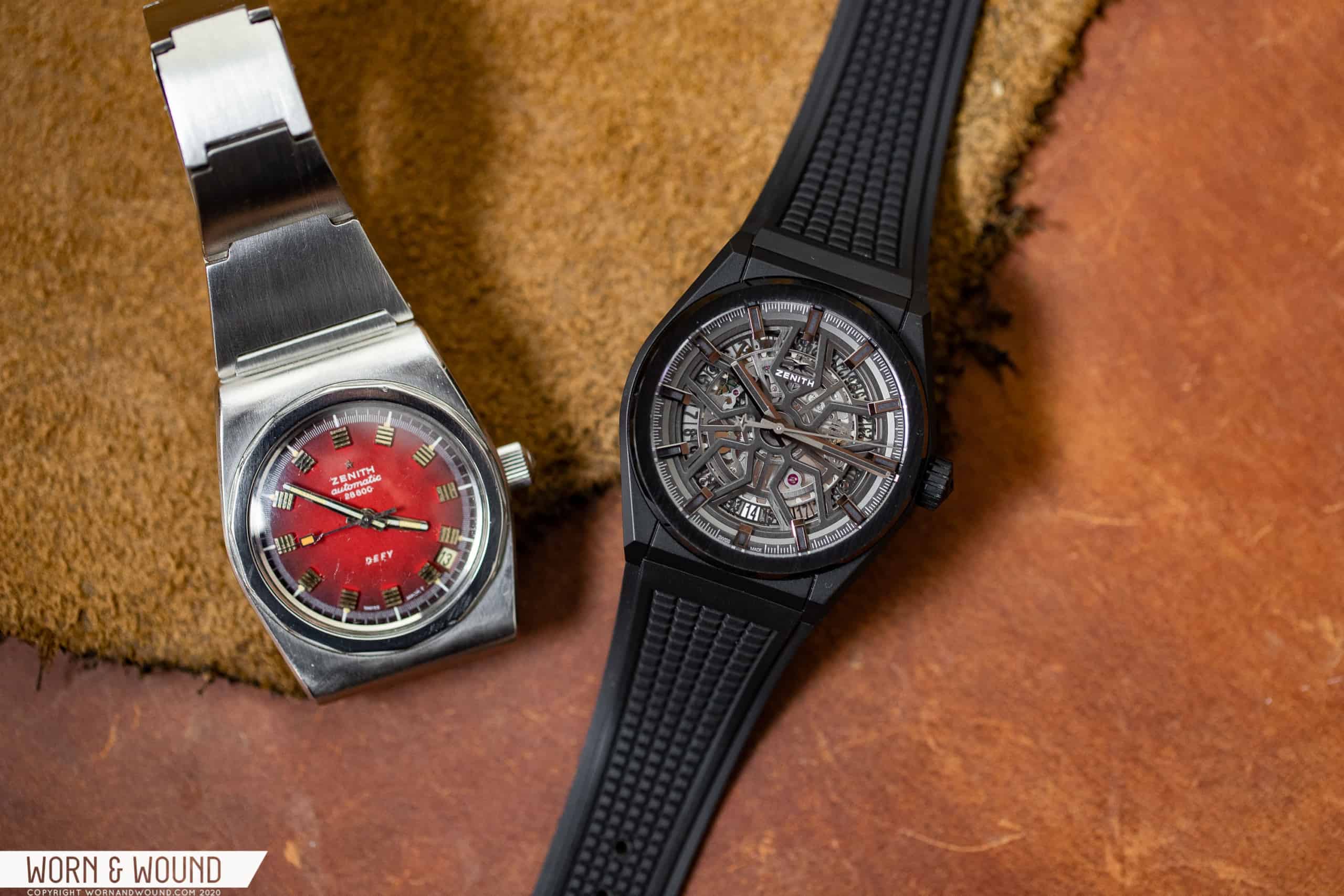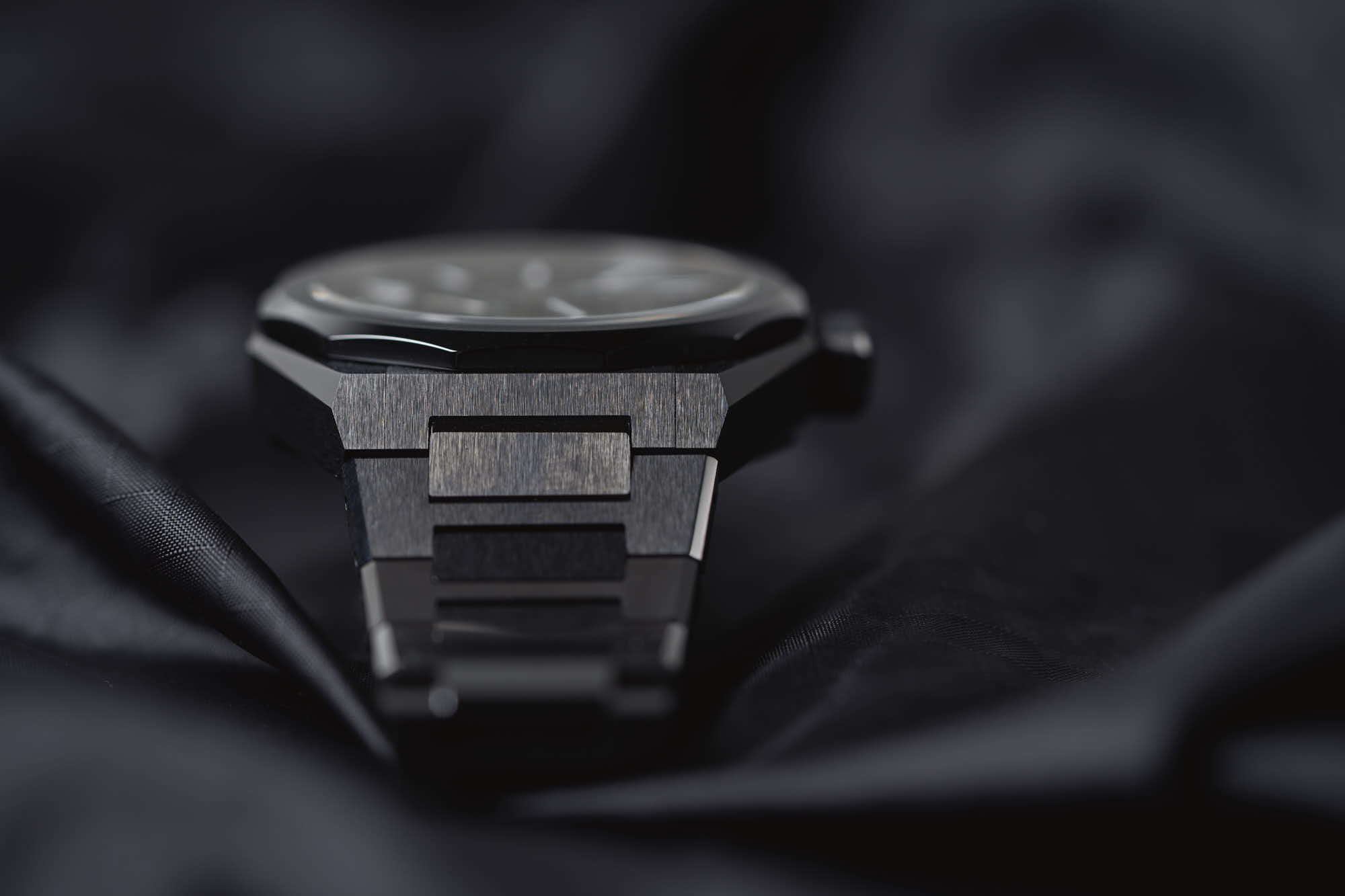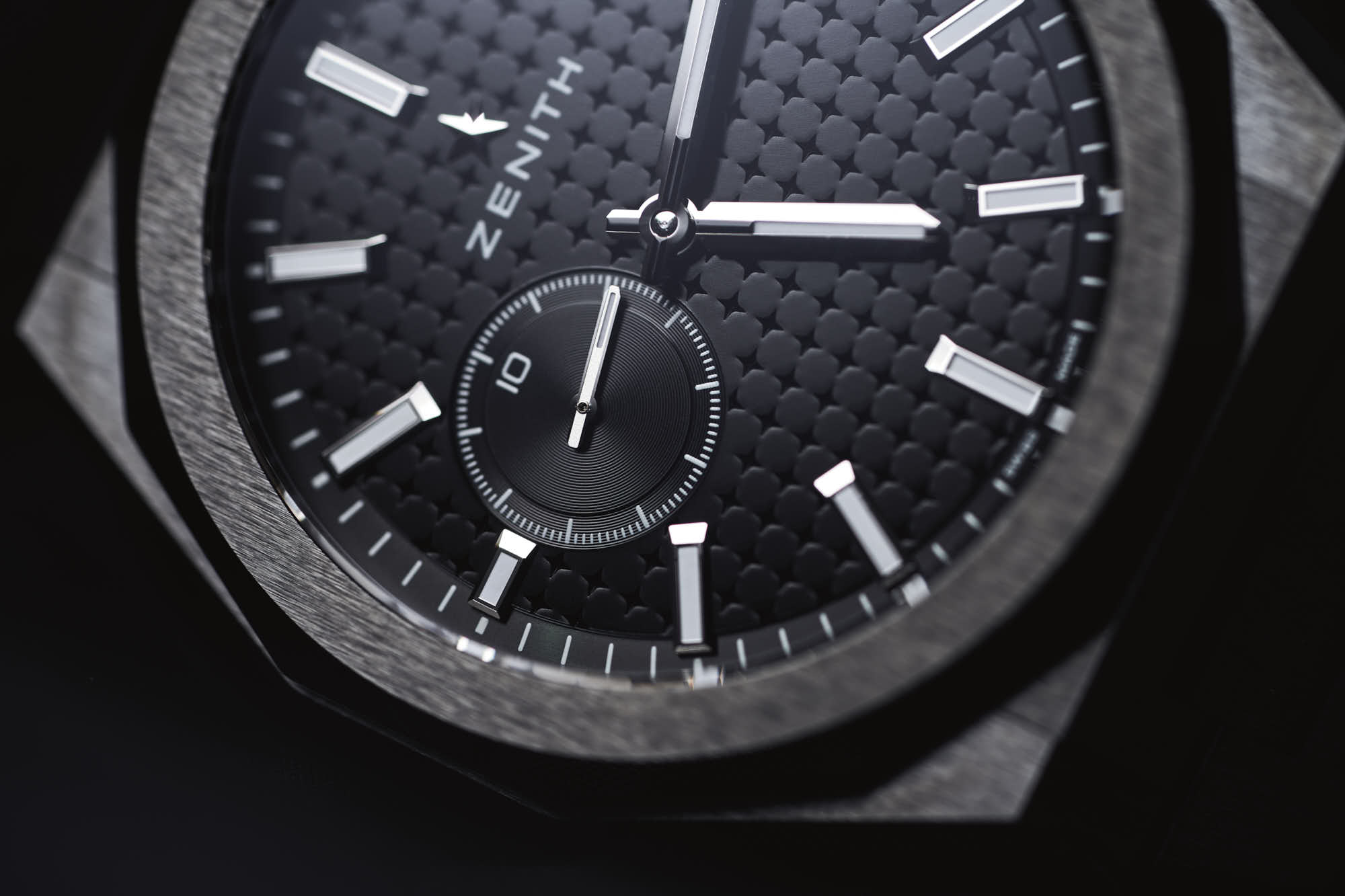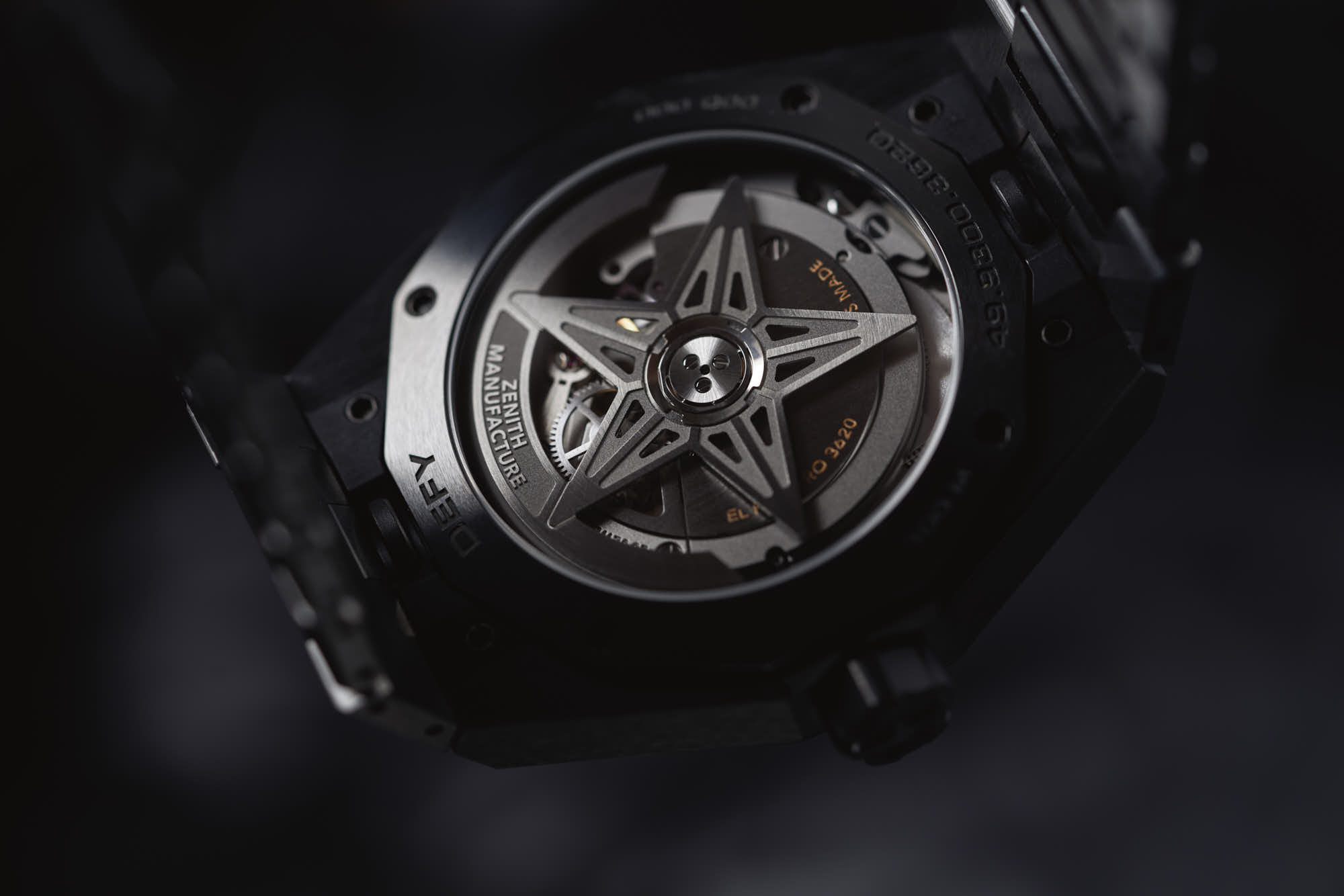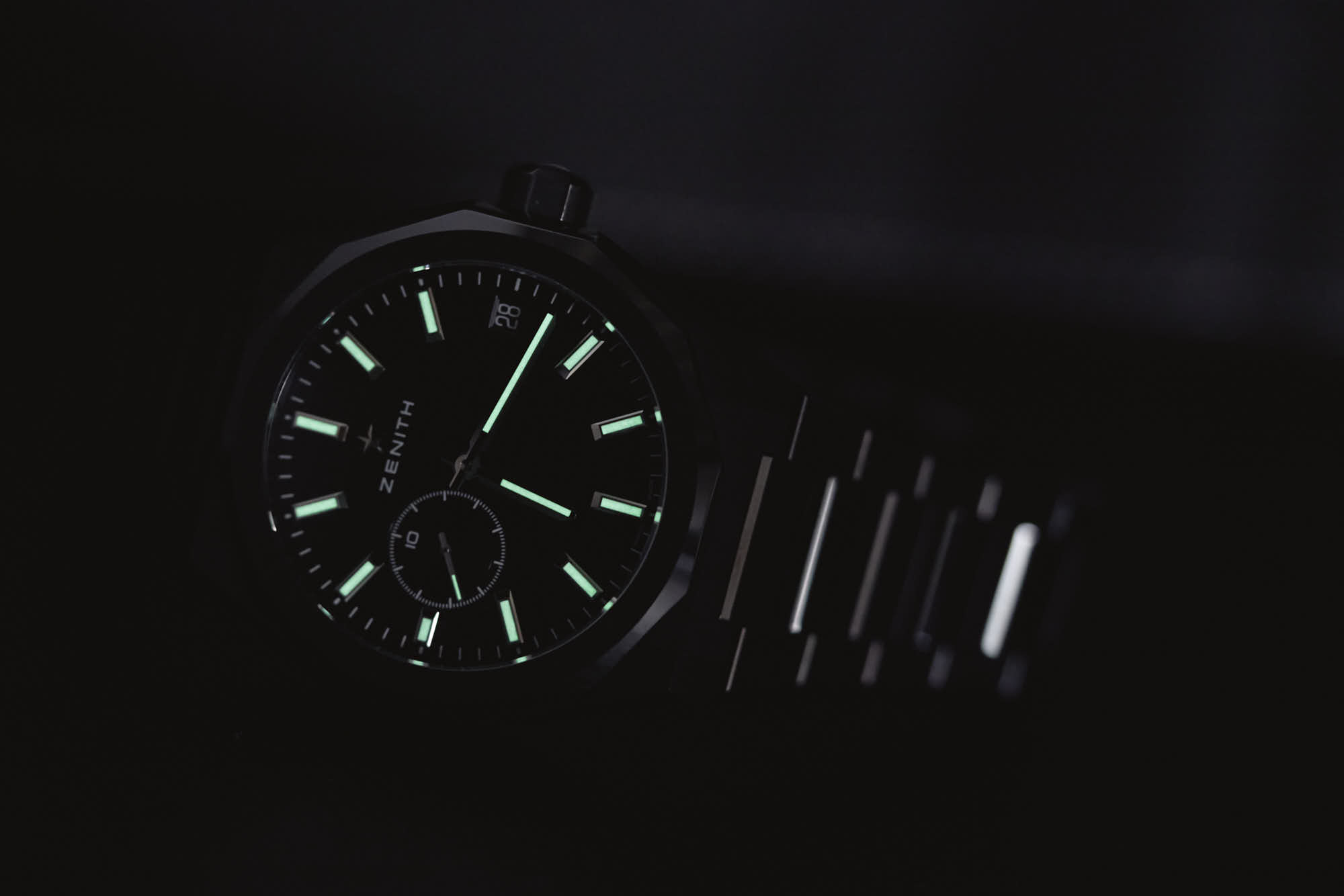That said, in terms of pure functionality, there’s absolutely nothing wrong with the star motif dial. Hour markers are applied and filled with white lume, making them easily legible against the black backdrop, ditto for the hands. The dial’s proportions feel right to me as well. The date window at 3:00 is very close to the dial’s perimeter and outer minute track, which I prefer to it being scrunched too close to the dial’s center. And it balances nicely with the subsidiary seconds counter at 9:00, which is nicely finished with a very fine concentric circular pattern on multiple levels, providing for some nice contrasts with the main dial. While the dial doesn’t have an element that blows my hair back in the same way as the case, it’s objectively easy to read, and ultimately proves to be inoffensive.
The Defy Skyline is powered by the El Primero 3620, and it’s still one of the strangest calibers used by a big Swiss brand. It uses the same base movement as Zenith’s vaunted chronographs, but of course doesn’t display elapsed time. It retains, however, the most dramatic feature of the current generation El Primero movement, and that’s a second hand run directly off the escapement that makes a full rotation around the dial once every ten seconds. In Zenith’s chronographs, this allows for a level of precision in timing an event that’s honestly hard for the human nervous system to keep up with. On a three-hander, it serves as a constant reminder of the high frequency movement at work, and makes for a fun visual parlor trick at the watch meetup. When I wrote about the steel version of this watch, I said that it was Zenith flexing, showing off their heritage in high frequency movement making, and I still think that’s the case, and can’t fault them for wanting to remind people of the El Primero every chance they get. It’s an historic caliber that continues to get better as the years go by, and even if it doesn’t actually prove to be functional here (beyond, in theory, better timekeeping) it feels like an authentic way for Zenith to weave their brand’s story and history across collections.
![]()
The Defy Skyline has really grown on me since I first spent time with the steel version over a year ago, and now in ceramic, I feel like the watch has found a sweet spot. While my preference would be for an open dial, there’s no denying the appeal of this case, which is somehow both ergonomically correct and architectural in a nearly sci-fi way.
![]()
The Skyline has also done a funny thing with respect to how I feel about the Classic, which I can’t help but see in a different light now that the new collection is a bit more fleshed out, and the Classic is all but erased from the catalog. The Defy might mean something different to each collector and enthusiast that engages with it, but if you view these watches as being made with the intent to be bold statements on the vanguard of contemporary design, the Skyline, by just about every measure, is better at being a Defy than its predecessor. There is, I hope, a spot in Zenith’s collection for a thin, modern sports watch using an Elite series movement, but in terms of the Defy, I’ve come to think that watches bearing that particular designation should be a little flashier, a little more adventurous, and more advanced in terms of materials used and the movement tech. The Skyline in black ceramic, particularly with this impressive bracelet, is a showstopper, and feels completely worthy of the Defy name. Zenith









 Featured Videos
Featured Videos




